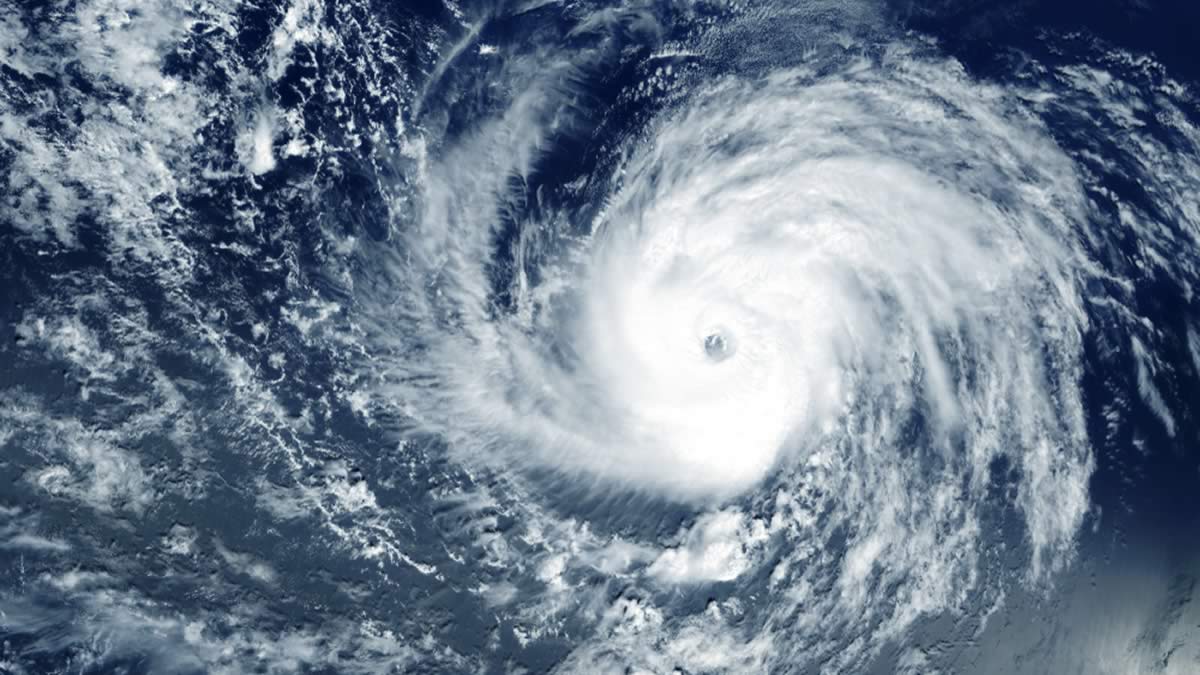

All outdoor structures erected here in South Florida must be ready to stand up to the mighty winds and storm conditions that come ashore during hurricane season. While DIY pergola kits are rarely designed to withstand a hurricane, all of the pergolas we build here at SYZYGY Global are engineered to meet these unique local code challenges. No structure can be guaranteed to survive an extreme Category 5 storm, but with a combination of a high-quality structure, proper structural engineering, experienced construction, and some intuitive technology, your new hurricane rated pergola will have the best opportunity to withstand South Florida’s hurricane force winds.
The first step in crafting a hurricane rated pergola is the choice of materials. Wood pergolas will rot over time, and vinyl pergolas are susceptible to damage from heavy winds or flying debris, so a strong-yet-lightweight material is ideal. All of the pergolas we design and build with our manufacturing partner Azenco are crafted from high-quality aluminum, and treated with high-quality powder coatings that are ideal for the humid and rainy environment in Palm Beach County.
Ensuring your pergola is up to withstanding extreme storm events starts with engineering for local municipality code acceptance. Given the area’s regular powerful storms, South Florida holds some of the most stringent standards in the country for storm-related construction. While knowing the product is engineered to local hurricane code is certainly comforting, there are other factors which contribute to a hurricane rated pergola design.
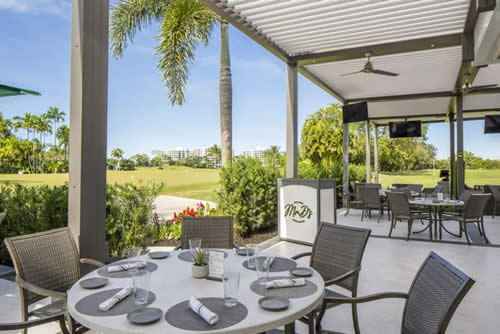

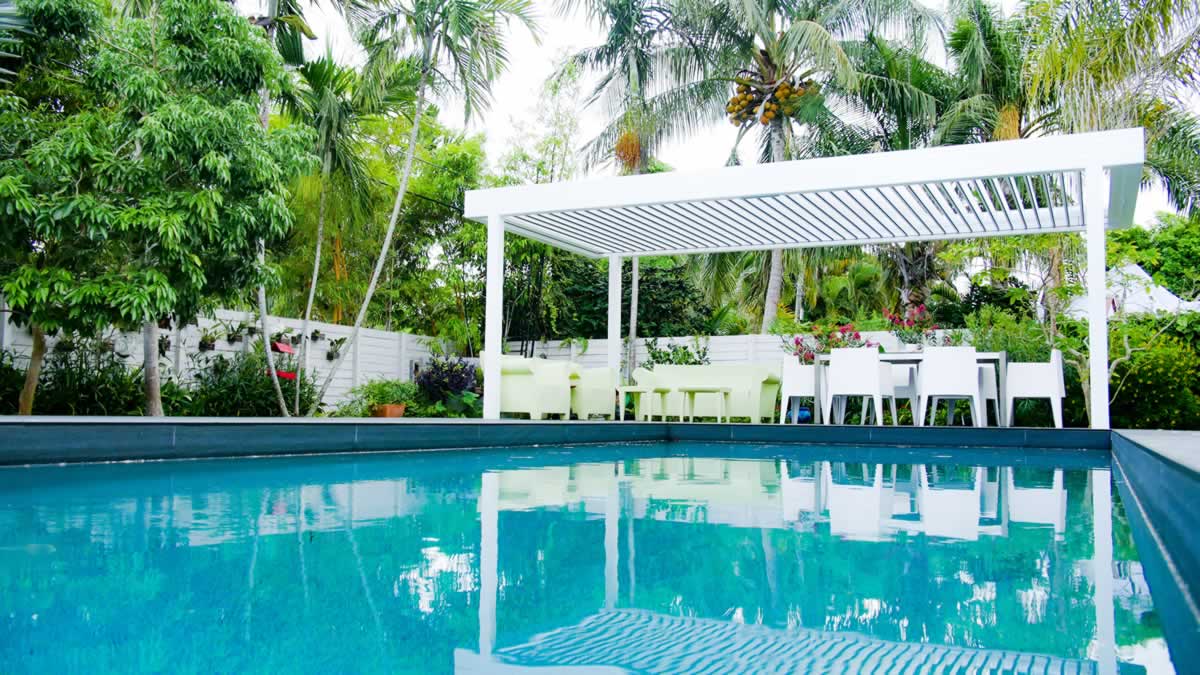
Each pergola we design for our commercial and residential customers throughout the Gold Coast are each engineered to site-specific conditions ensuring the optimal storm resistance. The structural engineering requirements for each pergola varies from project to project. Even if you were to erect two separate pergolas, one in your front yard and one in your backyard, the engineering requirements for the depth of footings, assembly hardware, etc. could vary greatly. Some of the factors which our engineers will evaluate in creating the structural renderings for your pergola permit include:
As we’ve seen above, a pergola’s ability to withstand a hurricane is dependent on skilled manufacturing, and experienced engineering, but expert design and installation also play an important role in weathering a storm. Our pergola designers have experience creating a myriad of pergola styles which meet and exceed the wide-ranging local building codes throughout South Florida. While our client’s vision for the style, location and functionality of their planned pergola project always guides the way, in some locations where storm impacts may be potentially aggressive, some pergola designs may be better suited. For instance, depending on the pergola orientation, our design team may recommend homeowners consider a pergola attached to the home rather than a standalone structure, or recommend an adjustable louvered roof pergola over a fixed roof design. These elements can have major impacts on a pergola’s storm resistance. Attaching the structure to a home can sometimes provide a windbreak to buffer the impacts of a storm, and a louvered roof is able to open to eliminate the potentially-damaging updrafts during a storm event.
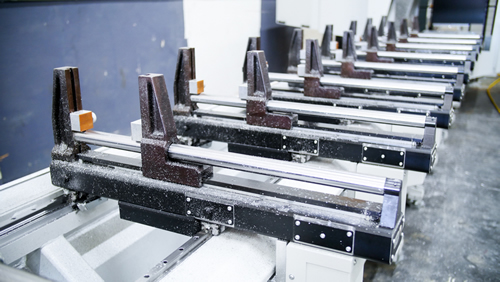
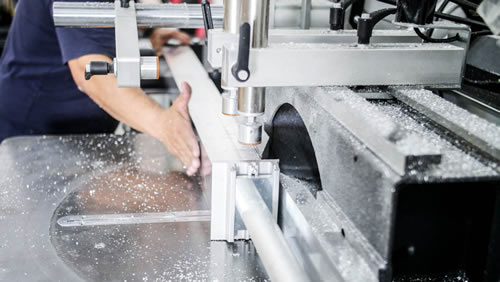
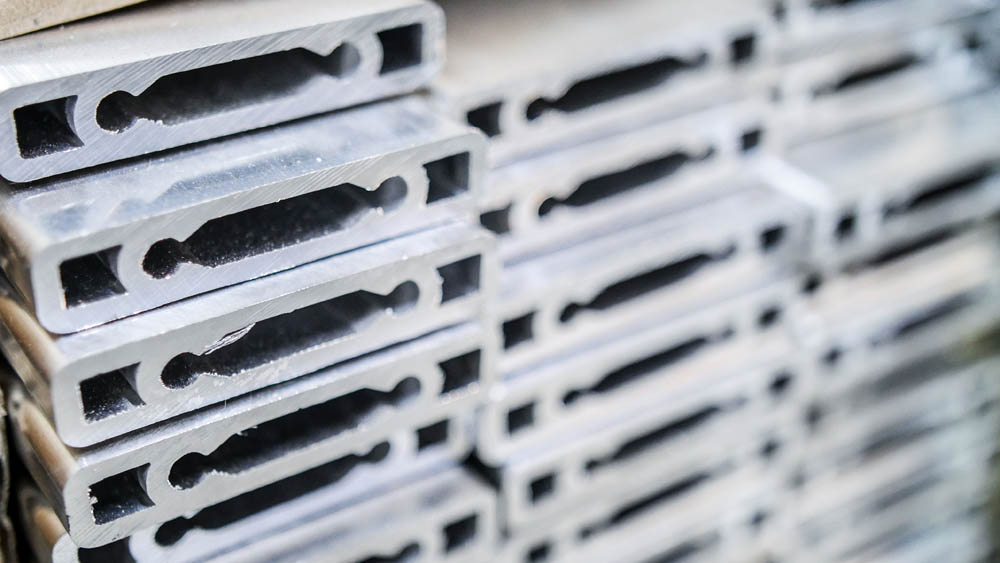
While both fixed roof pergolas and adjustable louvered roof pergolas can be engineered to meet the strict wind resistance standards of Miami-Dade County, the former may require more extensive engineering to secure those approvals. For instance, because a fixed roof design can be exposed to heavy uplift during a storm, local building inspectors may demand much deeper footings for the structure. This can lead to more extensive excavation and more-robust hardware, which can elevate project budgets. In these types of instances, our design team will often recommend choosing an adjustable louvered roof design capable of opening the roof in high winds to vent those potentially-damaging updrafts. To take this storm resistance to the next level, we often suggest intuitive wind sensors be added to the roof. These sensors monitor for surging storm winds and are designed to open the motorized louvers when potentially-damaging winds are detected.
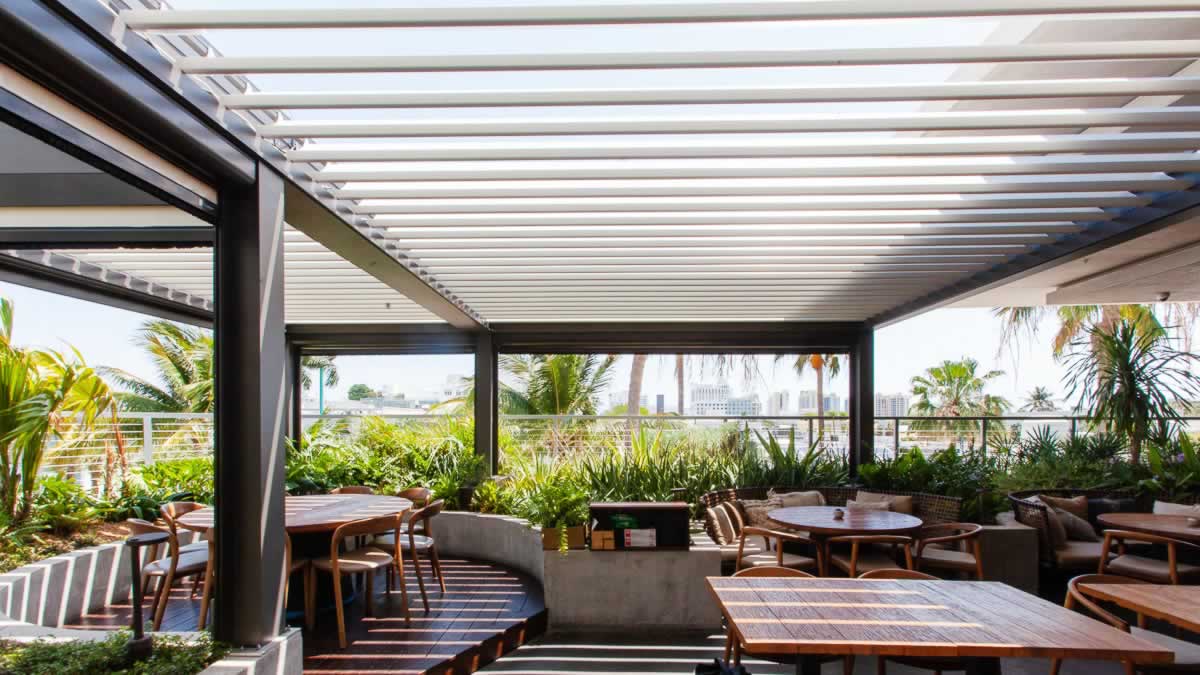
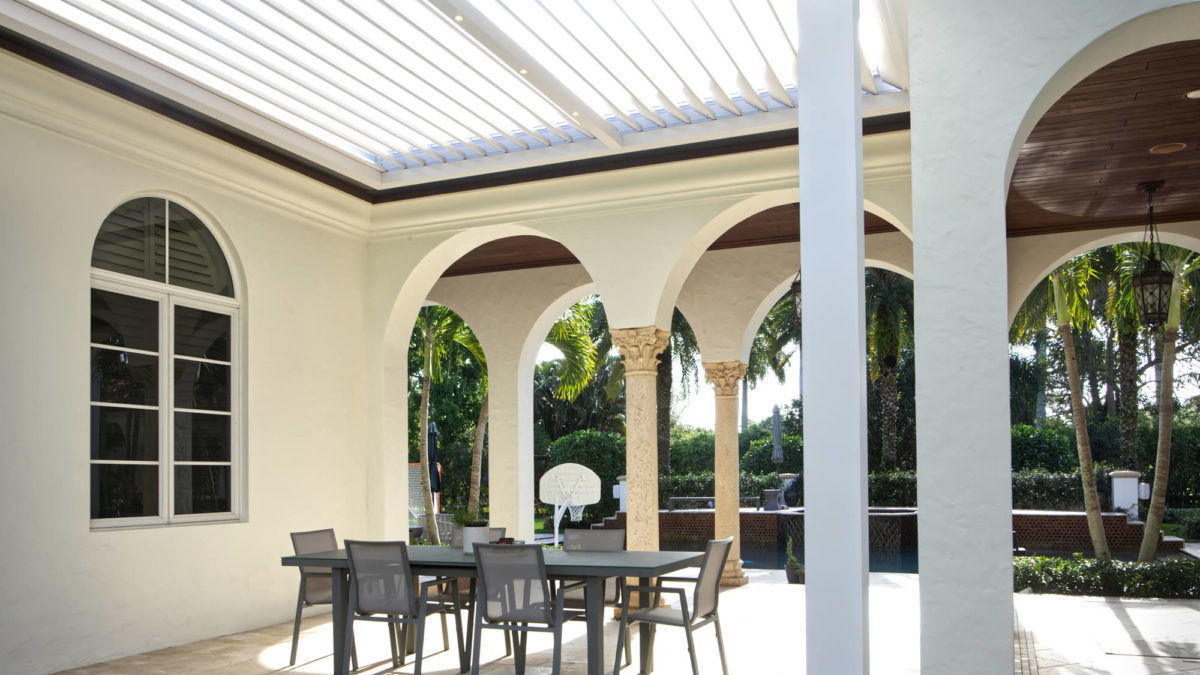
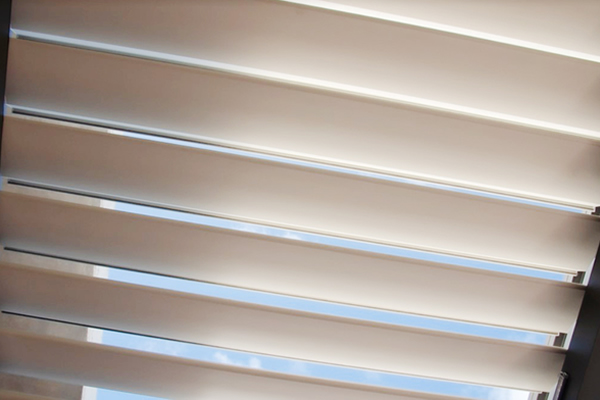
Designing and installing a pergola to Miami Dade Code is only the precursor to ensuring your new pergola is ready for hurricane season. It is also important to properly maintain the structure. Routine pergola maintenance is extremely simple and should be marked on your calendar twice annually. We recommend a cleaning and visual inspection just before hurricane season begins and again once it concludes.
Part of this easy maintenance process is simply using your pergola regularly, especially for structures with adjustable louvered roofs. The adjustment of the louvers will self-lubricate the mechanics, keeping them moving properly should the automatic wind sensor need to open the roof in a storm. It is also important to keep the gutter system clear of debris that could obstruct water flow during a hurricane.
For more detail on how to best maintain your pergola, check out our Guide to Clean a Pergola and Pergola Maintenance.
With your hurricane-rated pergola in good working order, it is best prepared to endure a storm, but there are also some relatively common-sense steps you can take to further safeguard your patio cover including:
Once the storm has passed, we also recommend a visual inspection of your pergola. If anything looks out of the ordinary on your pergola, please contact service@syzygyglobal.com at your convenience.
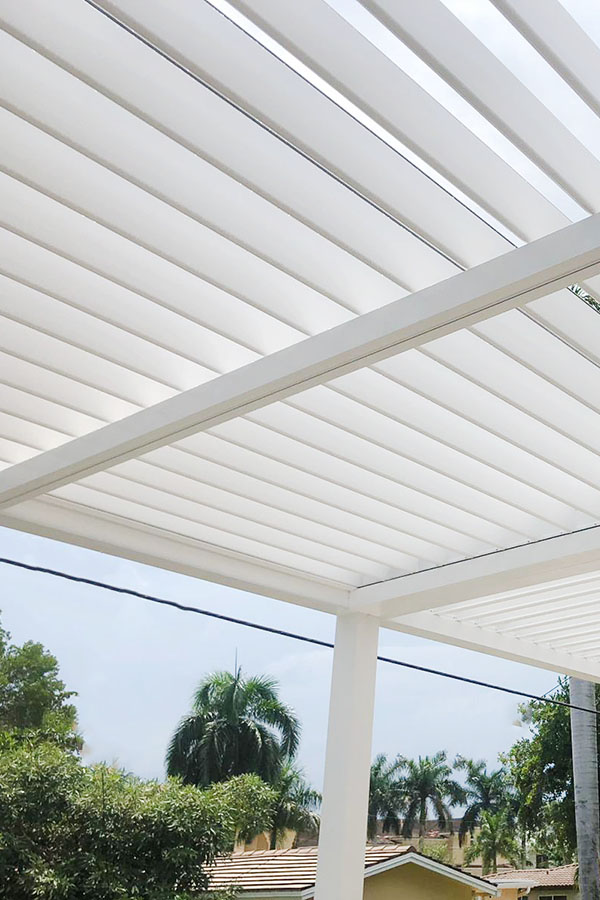
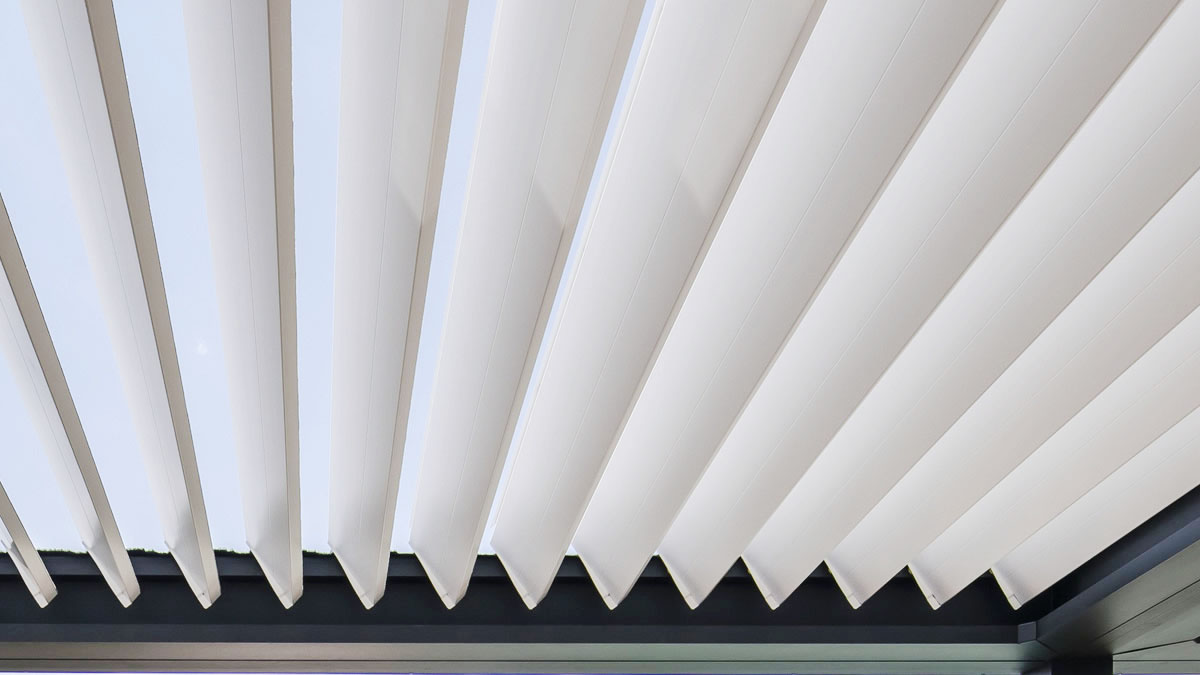
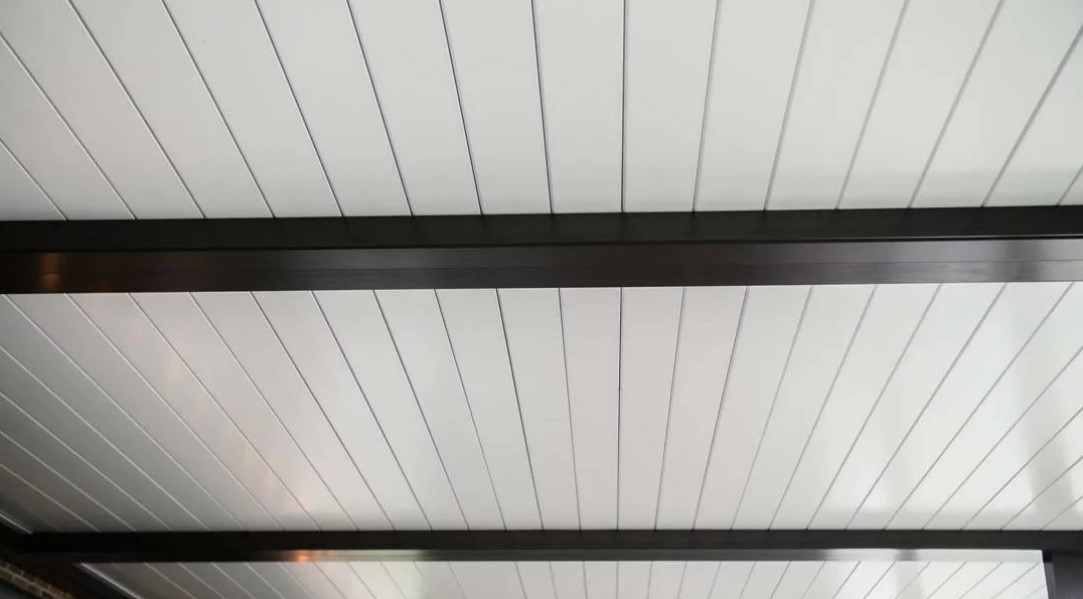
Though no structure can be guaranteed to be a hurricane-rated pergola, leveraging optimal materials and build quality, expert site-specific engineering, and some intuitive modern technology will help ensure your pergola stands up to some of the most powerful storms we see here in South Florida. If you are considering adding a pergola to your coastal home, contact us today, and our design team will help you create the outdoor living space of your dreams.

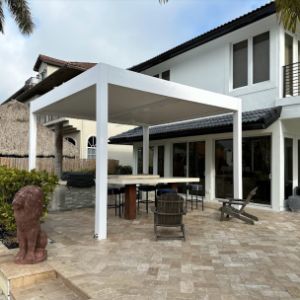
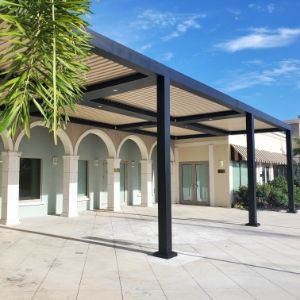
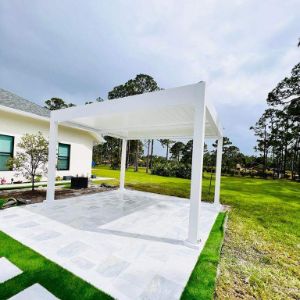
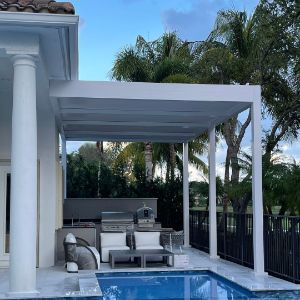
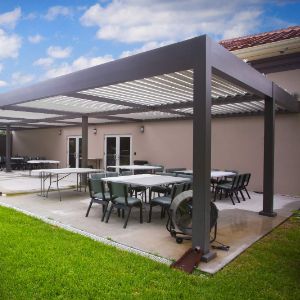
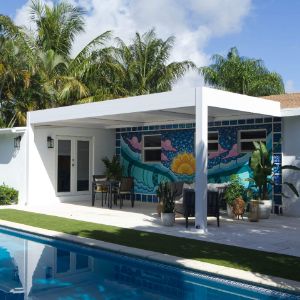
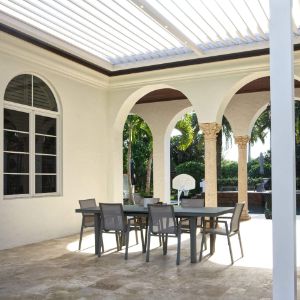


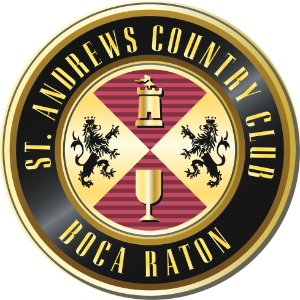



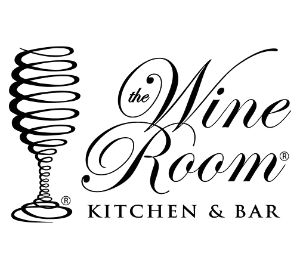

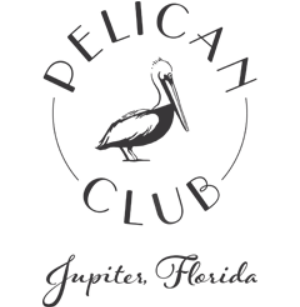









Name
